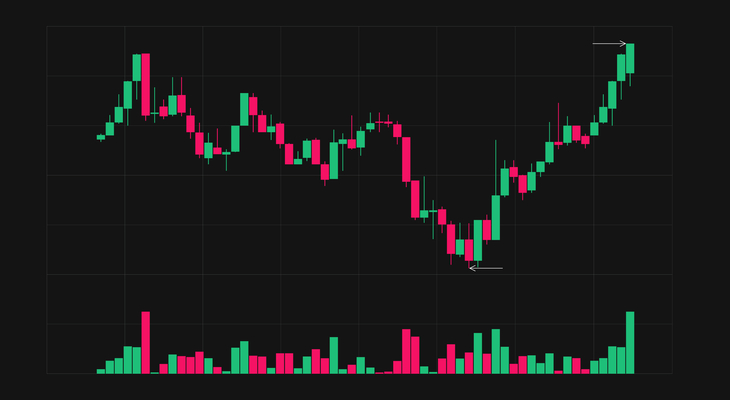The Stochastic Oscillator is a powerful tool used by traders to identify potential buy and sell signals in the Forex market, however, many question its efficacy for technical analysis.
This article will explore the Stochastic Oscillator, including signal identification, strategies and tools, and how to master it in Forex trading.
First, the article will provide an overview of the Stochastic Oscillator and its components, such as the %K and %D lines, as well as the buy and sell signals it generates.
It will then discuss how to identify these signals and strategies to maximize the effectiveness of the Stochastic Oscillator, including the use of the Relative Strength Index.
Finally, the article will discuss how to apply the Stochastic Oscillator to both trending and ranging markets.
By the end of this article, readers will have gained a better understanding of the Stochastic Oscillator and how to effectively use it for Forex trading.
Key Takeaways
- The Stochastic Oscillator is a popular technical analysis tool used by traders worldwide.
- It consists of two lines: %K and %D, with major signals generated using %D.
- The Stochastic Oscillator ranges between 0 and 100, with readings above 80 indicating overbought levels and readings below 20 indicating oversold levels.
- Buy signals are generated when both %K and %D lines fall and cross below the 20 oversold level, with additional confirmation if %D rises above 20. Sell signals are generated when both %K and %D lines rise and cross above the 80 overbought level, with additional confirmation if %D falls below 80.
What is it?
The Stochastic Oscillator is a technical analysis tool used by traders to identify possible buy and sell signals in the forex market. It is based on a comparison of closing prices to the highs and lows of a range of candlesticks. Developed by George Lane, it consists of two lines: %K and %D, with major signals generated using %D.
The Stochastic Oscillator ranges between 0 and 100, with a reading of 0 indicating the closing price is equal to the lowest price and a reading of 100 indicating it is equal to the highest price. Readings above 80 suggest extreme overbought levels, while readings below 20 suggest extreme oversold levels.
Buy signals are generated when both %K and %D lines fall and cross below the 20 oversold level, with additional confirmation if %D rises above 20. On the other hand, sell signals are generated when both %K and %D lines rise and cross above the 80 overbought level, with additional confirmation if %D falls below 80.
When using the Stochastic Oscillator, it is important to consider its advantages and limitations, as well as to properly interpret and analyze the generated signals.
Signal Identification
Signal identification can be achieved with the use of two lines, %K and %D, with major signals generated using %D.
%K is used to determine where the price closed in relation to a range of candlestick, with readings above 80 indicating the closing price is near the highest high and below 20 the lowest low.
%D is the 3-period simple moving average of %K, known as Fast Stochastics, while Slow Stochastics are calculated by taking an additional 3-period Simple Moving Average of %D and %K.
Buy signals are triggered when the two fall and cross below the 20 oversold level, with additional confirmation if %D rises above 20.
Similarly, sell signals are generated when they rise and cross above the 80 overbought level, with additional confirmation if %D falls below 80.
The Stochastic Oscillator can be used to identify profitable entry and exit points, as well as to confirm trends.
Strategies and Tools
Combining the Stochastic Oscillator with other tools such as Relative Strength Index (RSI) and Divergence can improve signal identification and help traders identify profitable entry and exit points, as well as confirm trends. To trade successfully, it is important to avoid common mistakes such as allowing emotions to influence decisions, not risk management, and attempting to predict the market. Backtesting techniques such as paper trading and using simulation software can help traders develop strategies and practice without risking real funds. Additionally, traders should use tools such as pivot points, the Gartley pattern, and Gann Swing Charts to identify support and resistance levels. Leveraged products such as forex and CFDs carry a high level of risk, so traders should only risk what they can afford to lose.
| Tool | Description | Advantages |
|---|---|---|
| Relative Strength Index (RSI) | A momentum indicator used to measure overbought and oversold levels. | Helps traders identify profitable entry and exit points. |
| Divergence | Divergence occurs when the price and the oscillator move in opposite directions. | Helps traders confirm trends. |
| Pivot Points | A popular tool used to identify support and resistance levels. | Helps traders identify potential entry and exit points. |
| Gartley Pattern | A chart pattern used to identify support and resistance levels. | Helps traders identify potential entry and exit points. |
| Gann Swing Charts | A charting technique used to identify support and resistance levels. | Helps traders identify potential entry and exit points. |
Frequently Asked Questions
How is the Stochastic Oscillator calculated?
The market has long been driven by the forces of supply and demand – but how can one accurately measure these forces?
Enter the Stochastic Oscillator, a popular technical analysis tool used by traders worldwide to measure both volatility and overbought levels.
The Stochastic Oscillator is calculated using two lines: %K and %D. %K determines where the price closed in relation to a candlestick range, and %D is the 3-period simple moving average of %K.
It oscillates between 0 and 100, with readings above 80 indicating extreme overbought levels and readings below 20 suggesting extreme oversold levels.
Buy and sell signals are generated when %K and %D cross above/below the 20/80 levels, respectively.
Combining the Stochastic Oscillator with other tools such as the Relative Strength Index can help generate more accurate signals.
What is the significance of the %K and %D lines?
The %K and %D lines are used to identify patterns and trends in price movements. %K is a line that indicates where the price closed in relation to a range of candlesticks, while %D is the 3-period simple moving average of %K.
Readings above 80 suggest extreme overbought levels, while readings below 20 suggest extreme oversold levels. Buy and sell signals are generated when both %K and %D lines fall/rise and cross below/above the 20/80 levels, with additional confirmation if %D rises/falls above/below the respective levels.
These lines are useful in both trending and ranging markets and can be combined with other tools to provide more precise signals.
How does the Stochastic Oscillator work in ranging markets?
The Stochastic Oscillator can be used to determine if a market is in a ranging state. When the %K and %D lines are moving between the overbought (above 80) and oversold (below 20) levels, this indicates that the market is in a range-bound state.
A buy signal is generated when both %K and %D lines fall and cross below the 20 oversold level, with additional confirmation if %D rises above 20.
Conversely, a sell signal is generated when both %K and %D lines rise and cross above the 80 overbought level, with additional confirmation if %D falls below 80.
The Stochastic Oscillator is thus useful in both trending and ranging markets.
What other tools can be used in conjunction with the Stochastic Oscillator?
The use of technical analysis tools such as the Stochastic Oscillator is a popular choice among traders. When used in conjunction with other indicators, such as the Relative Strength Index (RSI), it can offer a broader macro view of the economic cycle and help traders make more informed decisions.
Other useful tools that can be used alongside the Stochastic Oscillator include pivot points, the Gartley pattern, and Gann Swing Charts, each providing an additional layer of insight into the market.
Furthermore, divergence can be incorporated for even more precise signals, with bearish or bullish divergence helping to identify potential trends.
To maximize the potential of the Stochastic Oscillator traders should use it in combination with other tools.
What is the risk of trading leveraged products such as forex and CFDs?
Trading in leveraged products such as forex and CFDs carries a high risk of loss due to the ability to use margin trading and overnight financing, which can amplify both losses and gains. Investors should understand the extent of their exposure to risk and do their due diligence prior to trading.
It is important to be aware of the potential for losses that may exceed the amount initially invested and to only invest money that can be risked. Financial advice should be sought if needed, as leveraging can be a double-edged sword and not suitable for all types of investors.
Conclusion
The Stochastic Oscillator is a powerful tool for traders seeking to gain an edge in the Forex market. When used properly, it can identify potential buy and sell signals and provide an effective way to navigate the markets.
The combination of the two lines, %K and %D, generate signals that can be used to identify trend reversals and entry and exit points.
By combining the Stochastic Oscillator with the Relative Strength Index, traders can refine their analysis and maximize their chances of success.
The Stochastic Oscillator is an invaluable tool for traders looking to make the most of their investments and take their profits to the next level.











